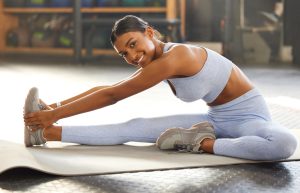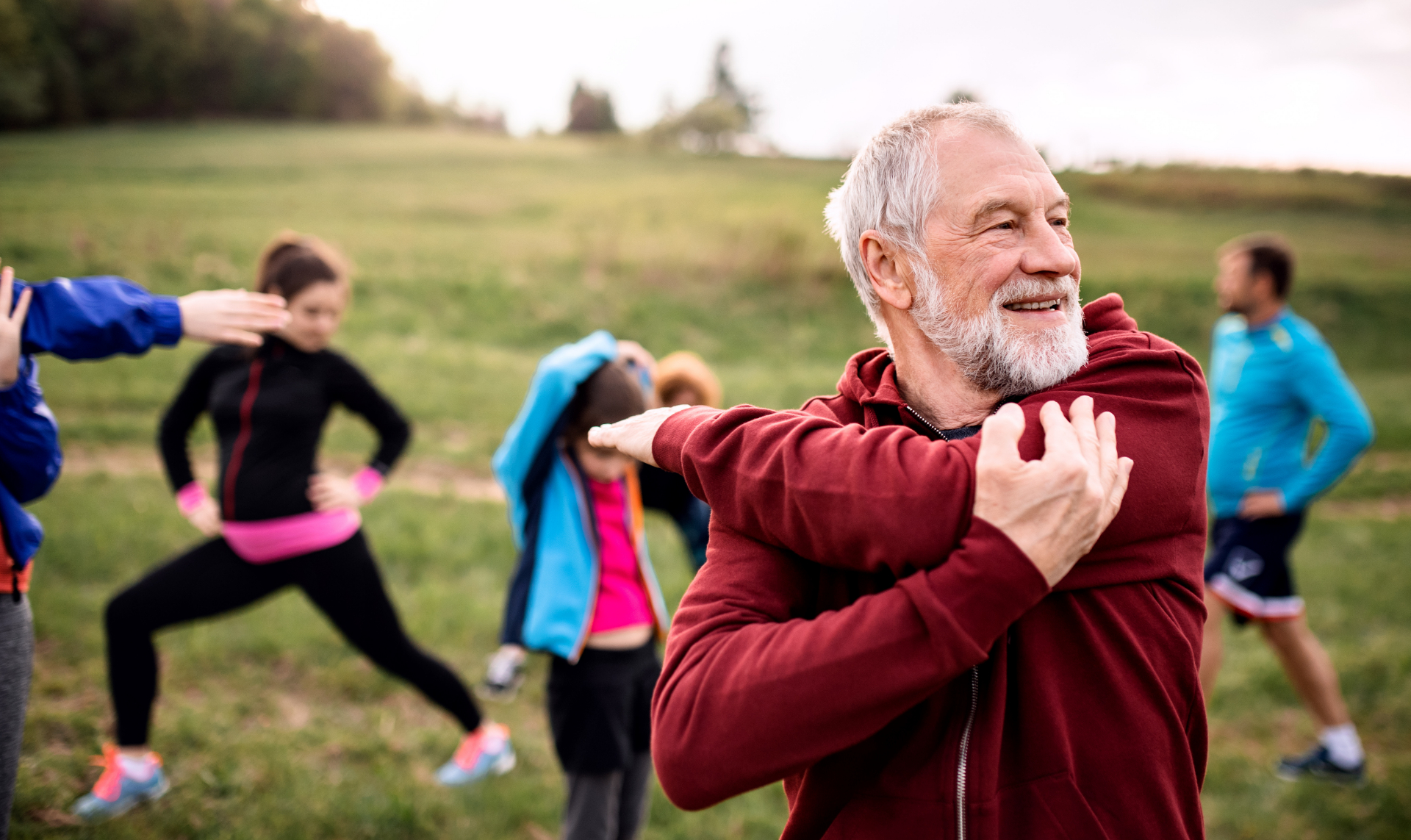Arthritis is a common condition that affects millions of people worldwide and in Las Vegas and Henderson. It causes inflammation, pain, and stiffness in the joints, making it hard to move and perform daily activities. Arthritis can also affect your mood, energy, and overall well-being.
While there is no cure for arthritis, there are ways to manage it and improve your quality of life. One of the best ways is to exercise regularly. Exercise can help you reduce your pain, increase your mobility, and boost your mood. Exercise can also lower your risk of other health problems, such as heart disease, diabetes, and depression.
But not all exercises are suitable for people with arthritis. You need to find the right type and amount of exercise for your condition and your goals. You also need to exercise safely and avoid injuring yourself or worsening your symptoms.
At ReliantHealth Primary & Wellness Care, we are committed to helping you live well with arthritis. We can help you create a personalized exercise plan that suits your needs and preferences. We can also monitor your progress and adjust your plan as needed.

Why Exercise is Good for Arthritis
Exercise is good for everyone, but especially for people with arthritis. Here are some of the benefits of exercise for arthritis:
- Exercise reduces pain. Exercise can help you reduce inflammation and pain in your joints by increasing blood flow, releasing natural painkillers, and strengthening the muscles that support your joints. Exercise can also help you lose weight, which can reduce the pressure on your joints and ease your pain.
- Exercise increases mobility. Exercise can help you maintain or improve your range of motion and flexibility in your joints. This can make it easier for you to move and perform daily activities, such as walking, climbing stairs, or reaching for objects. Exercise can also improve your balance and coordination, which can prevent falls and injuries.
- Exercise boosts mood. Exercise can help you improve your mood and mental health by releasing endorphins, serotonin, and other chemicals that make you feel good. Exercise can also help you cope with stress, anxiety, and depression, which are common among people with arthritis. Exercise can also increase your self-esteem and confidence, which can improve your quality of life.
How to Exercise Safely and Effectively with Arthritis
Exercise is beneficial for people with arthritis, but it can also pose some risks if not done properly. You need to exercise safely and effectively to avoid injuring yourself or worsening your symptoms. Here are some tips on how to exercise safely and effectively with arthritis:
- Talk to your doctor or health care provider before you start any exercise program. They can help you determine the best type and amount of exercise for your condition and your goals. They can also advise you on any precautions or modifications you need to take, such as wearing supportive shoes, using assistive devices, or avoiding certain movements. They can also monitor your progress and adjust your plan as needed.
- Warm up before and cool down after each exercise session. Warming up and cooling down are important for preventing injury and soreness. Warming up can help you prepare your muscles and joints for exercise by increasing blood flow, oxygen, and temperature. Cooling down can help you relax your muscles and joints after exercise by removing waste products, reducing inflammation, and restoring normal temperature. Stretching is a good way to warm up and cool down your muscles and joints.
- Start slowly and gradually increase your exercise intensity and duration. You should start with low-intensity and short-duration exercises, and gradually increase them as you get stronger and more comfortable. You should also listen to your body and avoid overdoing it. If you experience pain that lasts longer than an hour after exercise, you should rest and reduce your activity level. You should also vary your exercises to avoid boredom and prevent overuse of the same muscles and joints.
- Do a combination of flexibility, strengthening, and endurance or aerobic exercises. Flexibility exercises help you maintain or improve your range of motion and prevent stiffness. Strengthening exercises help you build muscle mass and protect your joints. Endurance or aerobic exercises help you improve your cardiovascular health and stamina. You should do each type of exercise at least two or three times a week, depending on your condition and your goals. You can also do some low-impact exercises, such as swimming, cycling, or walking, to reduce the stress on your joints.
- Exercising with others can make it more fun and motivating. You can join an exercise group or find an exercise buddy to keep you accountable and support you. You can also follow up regularly with your health care provider, such as a physical therapist or personal trainer, to get feedback and encouragement.
- If you need guidance on starting or modifying an exercise program, you can ask your ReliantHealth provider for a referral to an occupational or physical therapist. They can help you learn how to do the exercises correctly and safely, and how to adapt them to your specific condition and limitations.
Three Simple Stretching Exercises for Arthritis
Stretching is a type of flexibility exercise that can help you improve your range of motion and prevent stiffness in your joints. Stretching can also help you warm up and cool down your muscles and joints before and after exercise. Stretching is especially important for people with arthritis, who often experience tightness and reduced mobility in their joints.
Here are three simple stretching exercises that you can do at home or anywhere to improve your flexibility and prevent stiffness. You can do these exercises every day, or as often as you feel comfortable. You can also do these exercises before and after other types of exercise, such as strengthening or aerobic exercise.
Before you start, make sure you are in a comfortable position and wearing loose-fitting clothes. You can also use a chair, a wall, or a towel to help you with some of the exercises. You should hold each stretch for 10 to 30 seconds, and repeat each stretch two to four times, depending on your ability. You should feel a gentle pull or tension in the muscle or joint, but not pain. If you feel pain, stop and adjust your position or reduce the intensity of the stretch. You should also breathe normally and relax your muscles as you stretch.
Here are the three stretching exercises:

Neck Stretch
This stretch can help you loosen up your neck and shoulders, which can get stiff from sitting, working, or driving for long periods.
- Sit or stand with your back straight and your shoulders relaxed.
- Slowly tilt your head to the right, bringing your right ear toward your right shoulder. You can use your right hand to gently press your head down for a deeper stretch. You should feel a stretch on the left side of your neck.
- Hold for 10 to 30 seconds, then slowly return to the center.
- Repeat on the other side, tilting your head to the left and using your left hand to press your head down. You should feel a stretch on the right side of your neck.
- Repeat the whole sequence two to four times.

Chest Stretch
This stretch can help you open up your chest and improve your posture, which can get affected by hunching, slouching, or rounding your shoulders.
- Stand with your feet shoulder-width apart and your arms by your sides.
- Bring your arms behind your back and interlace your fingers. If this is too hard, you can use a towel to hold onto instead.
- Lift your arms up and away from your body, squeezing your shoulder blades together. You should feel a stretch in your chest and shoulders.
- Hold for 10 to 30 seconds, then slowly lower your arms and release your fingers or towel.
- Repeat the whole sequence two to four times.

Hamstring Stretch
This stretch can help you lengthen your hamstrings, which are the muscles at the back of your thighs. Tight hamstrings can cause lower back pain, knee pain, and reduced mobility.
- Sit on the edge of a chair with your back straight and your feet flat on the floor.
- Extend your right leg in front of you, keeping your knee slightly bent and your heel on the floor. Your toes should point up.
- Lean forward from your hips, keeping your back straight and your chest up. You should feel a stretch at the back of your right thigh.
- Hold for 10 to 30 seconds, then slowly return to the starting position.
- Repeat on the other side, extending your left leg and leaning forward. You should feel a stretch at the back of your left thigh.
- Repeat the whole sequence two to four times.
These are just some of the stretching exercises that you can do to improve your flexibility and prevent stiffness. There are many more stretching exercises that you can try, depending on your condition and your goals. You can also ask your ReliantHealth team to provide a referral to a physical therapist or personal trainer to show you more stretching exercises that are suitable for you.
Remember, exercise is one of the best ways to manage your arthritis and improve your quality of life. Exercise can help you reduce your pain, increase your mobility, and boost your mood. But you need to exercise safely and effectively to avoid injuring yourself or worsening your symptoms. You also need to find the right type and amount of exercise for your condition and your goals.
At ReliantHealth Primary & Wellness Care, we are here to help you live easy with arthritis. We can help refer you to the right resources to create a personalized exercise plan that suits your needs and preferences. We can also monitor your progress and adjust your plan as needed.
If you want to learn more about how to exercise safely and effectively with arthritis, or if you need guidance on starting or modifying an exercise program, you can contact us today.
You can also book an appointment online or call us now.
Further Resources:
-
National Institute of Arthritis and Musculoskeletal and Skin Diseasewww.niams.nih.gov
-
American College of Rheumatologywww.rheumatology.org
-
Arthritis Foundationwww.arthritis.org
Disclaimer:
This generalized information is a limited summary of diagnosis, treatment, and/or medication information. It is not meant to be comprehensive and should be used as a tool to help the user understand and/or assess potential diagnostic and treatment options. It does NOT include all information about conditions, treatments, medications, side effects, or risks that may apply to a specific patient. It is not intended to be medical advice or a substitute for the medical advice, diagnosis, or treatment of a health care provider based on the health care provider’s examination and assessment of a patient’s specific and unique circumstances. Patients must speak with a health care provider for complete information about their health, medical questions, and treatment options, including any risks or benefits regarding use of medications. This information does not endorse any treatments or medications as safe, effective, or approved for treating a specific patient. Reliant Physicians dba ReliantHealth disclaim any warranty or liability relating to this information or the use thereof. The use of this information is governed by the Terms of Use of this website and our Privacy Policy.


